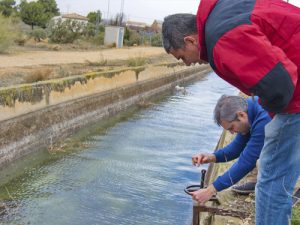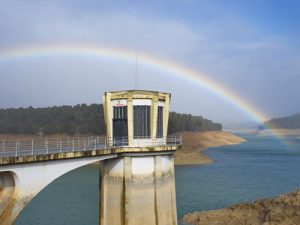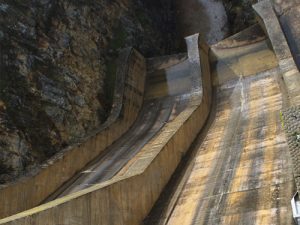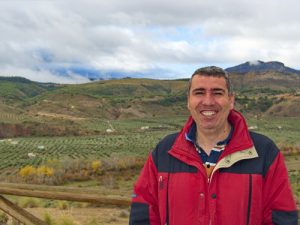The irrigation communities are in charge of organizing the collective use of public waters, they are a common form of public law in the south of Spain, the community of Pozo Alcón is one of the largest in Andalusia, it is an example of union of farmers for develop irrigation infrastructures that enable agricultural production in a particularly arid area of Jaén and Granada, which structures the social and economic life of the villages it supplies.
Area: 7.100 ha
The main source of water is the Bolera reservoir, from which water is pumped to different ponds that supply to more than 7,100 hectares of olive (85%), almond and horticultural (asparagus). Being located at the entrance to the Natural Park of Cazorla, there is demand for tourism from the east coast with many rural houses. As a consequence of climate change, the allocation of 2000-2200m3 / ha / year has been reduced to 1200m3 / ha. If it were not for the improvement plans and efficiency in the use of the water managed by the community there would have been no availability of this resource and the productions would have suffered significant losses.
The community emerged around 1860 as a private infrastructure of unipersonal ownership, after the infrastructure was sold to an energy transformation company, water served to generate electricity. Over time this activity lost profitability and the concessionaire ceased to maintain the infrastructure.
From this moment the farmers of the area decided to claim the ownership of the water concession. They achieved this objective around 1950, when they became an irrigation community, a figure of public law recognized in Spanish legislation.
Being a large community with high average age, decision-making through assembly became very complex and over time infrastructure began to need maintenance and new investments.
A major change occurred in 2004 with the entry of a new governing board that supposed the entry of younger and more dynamic people, with technical knowledge and with an up-to-date and a vision of future. They considered as a priority to adapt and modernize the infrastructure in order to make more efficient use of water and community resources.
The great change has occurred with the modernization plan undertaken, taking the project forward has been com- plicated since it was difficult for the community members to see in advance the benefits of the improvements they wanted to face.
With these improvements, they have saved 40% of water which has made possible to increase the irrigation area and increase the number of producers, who have been able to improve their average productivity by 20%, all this makes the investments profitable. A symptom of success is that the size of the community has multiplied by 3.5 times, with the aim of expanding further.
Throughout this process, communication has been the key factor, perhaps it could have been undertaken in another way, there has been a lot of street work, on the part of the governing board, to convince person by person about the positives of modernization. One of the greatest challenges in older communities is the aversion to change, especial- ly when it involves an economic expenditure for the farmer.
Throughout the modernization process, the community has received advice from SEIASA (State Agricultural Infra- structures Society of the Ministry of Agriculture), who have supervised the processing for European aid to fulfill the requirements for access to subsidies. From the technical point of view they have also had the support of a private company and internally they also have the services of a lawyer and a technician.
Looking to the future one of the greatest risks comes from climate change that is why it is necessary to take more advantage of the available water, for that purpose they intend to recover what is filtering under the Bolera reservoir. That will be the next project once the budgets for improvements at European level were unlocked.
Technical knowledge is especially valued in the community, the presence of a technical employee has been important to strengthen knowledge within the team and to help communicate the benefits of the improvements undertaken. Having a global vision and a vision oriented to the future helps the development of projects and anticipate challeng- es, you must know what you want to develop and how to carry it out, so a project orientation is relevant.
It is important to know the character of the people you have to deal with, be empathetic and have a social orienta- tion. We must argue, be consistent and be persistent in the justification of the benefits of the actions undertaken.
Advice/Recommendation
"We must be patient. Once the ideas are transmitted, it is necessary to have tenacity and move on, although sometimes you come down emotionally when obstacles arise."
Queries/Questions
- In the current climate change context, do you consider interesting to know about this cooperative form?
- Do you consider that the cooperative form which you belong have a generational relief challenge?
- In your cooperative way, do you try to maintain a vision of the future to anticipate the challenges that come to you?
- How do you think should be managed a form of cooperation with more than 3.000 partners and more than 7.000ha?



 Čeština
Čeština  English
English  Français
Français  Deutsch
Deutsch  Italiano
Italiano  Slovenščina
Slovenščina  Español
Español 






